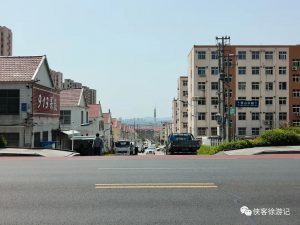There are secrets to preventing back pain while cycling
Back pain is the most common problem among riders, and both beginners and professional athletes complain about it.

Adjusting the height of the frame and the length of the upper tube, finding the correct sitting posture, and regularly performing muscle stretching exercises can effectively avoid back pain.

Tip 1: Proper sitting posture cherishes the posture of the back.

For beginners and travel riders who only want to relax by cycling, the ideal seat cushion position is: a shorter upper tube; There is a slight difference in height between the seat cushion and the handle.
Knights with back problems should also choose this sitting position because it can reduce the burden on the back muscles.
After regular training, the height of the handlebars can be lowered.
However, it should be noted that each change must be gradually adapted.
The difference of half a centimeter has already had a significant impact.
Trained riders should try a sitting posture with their upper body facing forward, as their back muscles are already able to adapt to the burden of cycling.
The longer upper tube requires the upper body to extend forward, causing the body’s center of gravity to shift forward, placing a heavy burden on the shoulder muscles.
The significant difference in height between the seat cushion and the handle also forces the upper body downwards, increasing the burden on the back muscles.
For beginners and knights with back problems, this sitting position is not suitable.
For sports car athletes, this posture can reduce wind resistance.
Tip 2: Stretching Exercise 1.
Shoulder Rotation Exercise.
Ideal warm-up exercise before each outing or daily training session: With feet at the same width as the hip bone, use one arm to move forward to drive the rotation of the shoulder.
This can relax the shoulder muscles and keep blood flowing throughout the back.
Place the other hand easily on the hip bone.
2.
Shoulder movement The movement of stretching scapula muscles.
Move the bent arm backwards at the height of the throat, with the other hand near the elbow joint, pressing the arm to continue moving backwards until you feel a tension between your shoulders.
This can enhance the stretching effect.
Attention: Do not twist your spine.
3.
Trapezoid muscle movement The movement of extending the trapezius muscle (located between the neck and scapula), with both feet the same width as the shoulder, the head turned to one side, and one hand placed on the side of the head.
After one to three repetitions, carefully pull your head sideways until you feel the muscles on the side of the neck have relaxed.
Keep your back straight and your shoulders relaxed.
4.
In windmill sports, both feet are the same width as the hip bone.
Carefully rotate one arm forward and the other arm backwards.
Look forward.
Rotating the arms in opposite directions not only relaxes the tense muscles in the shoulders and neck, but also promotes blood circulation.
5.
Neck Stretching Exercise This exercise allows you to stretch the neck muscles.
Please turn your head as far as possible to the side and carefully press your chin towards your shoulder with the hand placed on your head
.

